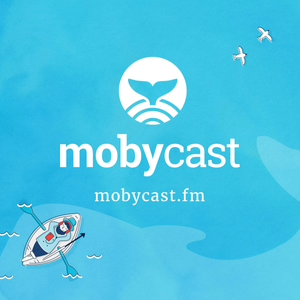
Mobycast
Mobycast.fm
All episodes
Best episodes
Top 10 Mobycast Episodes
Goodpods has curated a list of the 10 best Mobycast episodes, ranked by the number of listens and likes each episode have garnered from our listeners. If you are listening to Mobycast for the first time, there's no better place to start than with one of these standout episodes. If you are a fan of the show, vote for your favorite Mobycast episode by adding your comments to the episode page.
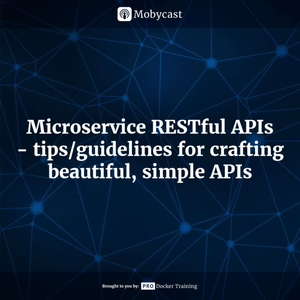
02/20/19 • 19 min
In Episode 48 of Mobycast, we discuss tips and guidelines for creating beautiful simple APIs. Welcome to Mobycast, a weekly conversation about containerization, Docker and modern software deployment.
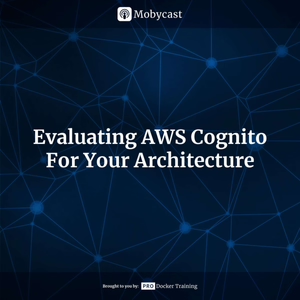
02/13/19 • 18 min
In episode 47 of Mobycast, we take a high level look at AWS Cognito and discuss when it's a good option for your projects. Welcome to Mobycast, a weekly conversation about containerization, Docker, and modern software deployment.
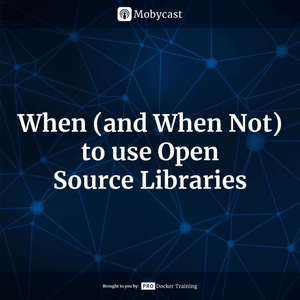
12/12/18 • 30 min
In episode 38 of Mobycast, we discuss when and when not to use open source libraries in your projects. Welcome to Mobycast, a weekly conversation about containerization, Docker and modern software deployment.
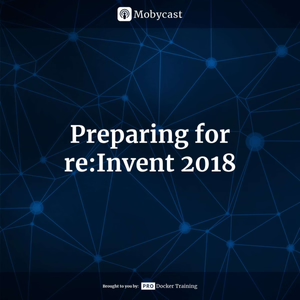
Preparing for Re:Invent 2018
Mobycast
11/14/18 • 43 min
In episode 36 of Mobycast, we look ahead to re:Invent 2018, discuss what to expect as well as offer a few practical tips to get the most value. Welcome to Mobycast, a weekly conversation about containerization, Docker and modern software deployment.
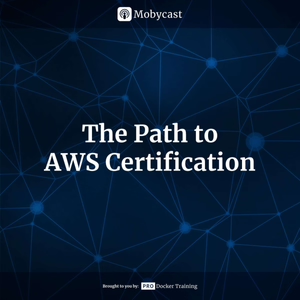
The Path to AWS Certification
Mobycast
12/05/18 • 31 min
In episode 37 of Mobycast, we discuss the process of becoming AWS certified. Including a few tips on how to prepare and pass the exam. Welcome to Mobycast, a weekly conversation about containerization, Docker and modern software deployment.
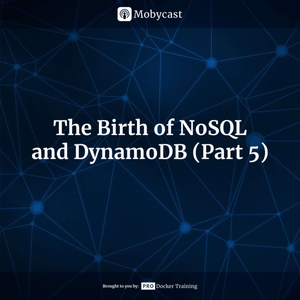
01/23/19 • 32 min
In episode 43 of Mobycast, we conclude our series on the birth of NoSQL and DynamoDB. In particular, we take a deeper look at Leviathan, the NoSQL database created by Chris’ startup in the late 90s and we compare it to DynamoDB today. Welcome to Mobycast, a weekly conversation about containerization, Docker, and modern software deployment.

04/15/20 • 42 min
Show Details
Jon Christensen and Chris Hickman of Kelsus and Rich Staats of Secret Stache conclude their series on the birth of NoSQL and DynamoDB. They compare the NoSQL database, Leviathan, created by Chris’s startup in the late 1990s to today’s DynamoDB. A lot of things haven’t changed, even though technology has evolved. It’s cyclical. There are patterns and problems that continue to dominate.
Some of the highlights of the show include:
- Reason for Creation of NoSQL Database: How to scale database with Internet-scale applications to have a virtual pool of infinite storage that can be scaled out
- Main Architecture Components of Leviathan:
- API client
- Update distributor (UD)
- Base server (storage node)
- Shepherd (housekeeping management system)
- Additional core components included smart IP and storage abstraction layer (SAL)
- Leviathan mostly used C code and minimal Java code to support users
- Big difference between DynamoDB and Leviathan is request router and partition metadata system living on the server vs. living on the edge
- Leviathan was a closed system with an instance for every network or data center; not designed to run as a software as a service, like DynamoDB
- Leviathan was strongly consistent, unlike DynamoDB’s eventually consistent model
- Definition and Different Types of Transactions
- Shepherd was used to identify and address consistency, synchronous, and timing issues
- Rather than using a file system, Leviathan used relational databases
Links and Resources
Quotes:
“We had the same kind of problems that DynamoDB had - how do you scale your database dealing with Internet-scale applications and have this virtual pool of infinite storage that can be scaled out.” Chris Hickman
“This system and this technology went through many iterations.” Chris Hickman
“You can’t have a 100% consistent state across everything. It’s just impossible. How do you do the right thing?” Chris Hickman
“The big difference between DynamoDB and Leviathan...is the request router and partition metadata system living on the server vs. living out at the edge.” Jon Christen

04/08/20 • 41 min
Show Details
What’s under the hood of Amazon’s DynamoDB? Jon Christensen and Chris Hickman of Kelsus continue their discussion on DynamoDB, specifically about it’s architecture and components. They utilize a presentation from re:Invent titled, Amazon DynamoDB Under the Hood: How we built a hyper-scale database.
Some of the highlights of the show include:
- Partition keys and global secondary indexes determine how data is partitioned across a storage node; allows you to scale out, instead of up
- Understand how a database is built to make architecture/component definitions less abstract
- DynamoDB has four components:
1. Request Router: Frontline service that receives and handles requests
2. Storage Node: Services responsible for persisting and retrieving data
3. Partition Metadata System: Keeps track of where data is located
4. Auto Admin: Handles housekeeping aspects to manage system
- What level of uptime availability do you want to guarantee?
- Replication: Strongly Consistent vs. Eventually Consistent
- Walkthrough of Workflow: What happens when, what does it mean when...
- DynamoDB architecture and components are designed to improve speed and scalability
- Split Partitions: Longer times that your database is up and the more data you put into it, the more likely you’re going to get a hot partition or partitions that are too big
Links and Resources
Amazon DynamoDB Under the Hood: How we built a hyper-scale database
Amazon Relational Database Service (RDS)
Quotes:
“Keep in mind that data is partitioned across storage node, and that’s a key feature of being able to scale out, as opposed to scaling up.” Jon Christensen
“Amazon was opening up the kimono...how DynamoDB has been architected and constructed and how it works.” Chris Hickman
“Managed Service - they get to decide how it’s architected...because they also have to keep it up and live up to their SLA.” Chris Hickman
“The longer the time that your database is up and the more data you put into it, the more likely that you’re going to get a hot partition or partitions are just going to get too big.” Chris Hickman

03/25/20 • 33 min
Show Details
Jon Christensen and Rich Staats learn about Chris Hickman’s first venture-backed startup (circa 1998) and its goal to build a database for Internet-scale applications. His story highlights what software is all about – history repeating itself because technology/software is meant to solve problems via new tools, techniques, and bigger challenges at bigger scales.
Some of the highlights of the show include:
- Why Chris left Microsoft and how much it cost him; yet, he has no regrets
- Chris’s concept addressed how to build a scalable database layer; how to partition, chart, and cluster; and how to make it highly available and a completely scale-out architecture
- Chris couldn’t use the code he had created for it while at Microsoft; but from that, he learned what he wouldn’t do again
- Chris let the file system be the database at Microsoft, and the project was named, Internet File Store (IFS); it used backend code and was similar to S3
- Chris named his startup Viathan; had to do copyright, trademark, and domain name searches
- Data for the Microsoft project could be stored in files/XML documents; Viathan took a different approach and used relational databases instead of a file system
- Companies experienced problems at the beginning of the Internet; rest of ecosystem wasn’t developed and there weren’t enough people needing Internet solutions yet
- Viathan went through several iterations that led to patents being issued and being considered as Prior art
- Viathan’s technology couldn’t just be plugged in and turned on, applications had to be modified – a tough sell
- Chris did groundbreaking work for what would become DynamoDB
Links and Resources
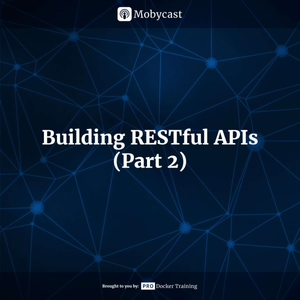
Building RESTful APIs (Part 2)
Mobycast
02/27/19 • 42 min
In episode 49 of Mobycast, we continue our conversation on building RESTful APIs. In particular, we discuss authentication and error handling. Welcome to Mobycast, a weekly conversation about containerization, Docker, and modern software deployment.
Show more best episodes

Show more best episodes
FAQ
How many episodes does Mobycast have?
Mobycast currently has 113 episodes available.
What topics does Mobycast cover?
The podcast is about Cloud, Aws, How To, Development, Software, Podcasts, Technology, Education and Programming.
What is the most popular episode on Mobycast?
The episode title 'Hands On AWS - Massively Scalable Image Hosting Using S3 and CloudFront - Part 1' is the most popular.
What is the average episode length on Mobycast?
The average episode length on Mobycast is 37 minutes.
How often are episodes of Mobycast released?
Episodes of Mobycast are typically released every 7 days.
When was the first episode of Mobycast?
The first episode of Mobycast was released on Mar 29, 2018.
Show more FAQ

Show more FAQ